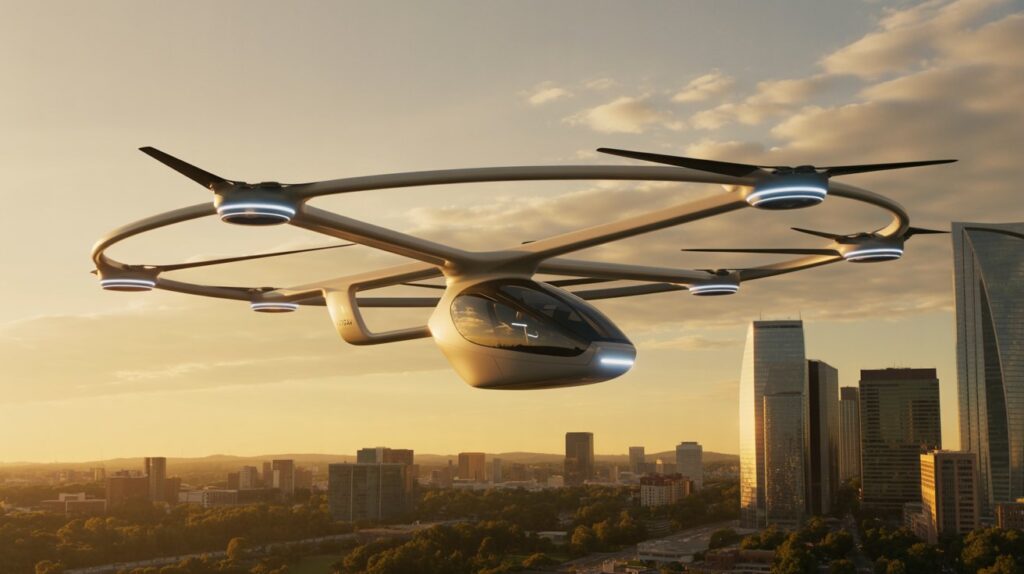The global eVTOL aircraft market is progressing at an unprecedented pace, signaling a new era of green aviation, advanced urban mobility and next generation transportation systems. With a valuation of USD 0.76 billion in 2024, the market is projected to reach USD 4.67 billion by 2030, fueled by a high CAGR of 35.%. Growth accelerates further as the market reaches USD 17.34 billion by 2035, reflecting broad adoption of electric and hybrid vertical lift technologies across commercial, civil, and emergency applications. This remarkable trajectory highlights how rapidly cities, governments and industry stakeholders are preparing for a shift toward cleaner and smarter air transport solutions.

eVTOL aircraft are designed around efficiency, sustainability and operational versatility. Powered by electric, hybrid or hydrogen propulsion systems, they offer a clean aviation alternative that supports global carbon reduction targets. The technology enables vertical takeoff and landing, allowing operations in dense urban areas where traditional runway infrastructure is limited. These aircraft provide fast, quiet and zero emission travel for missions ranging from air taxis and intercity shuttles to disaster relief, medical evacuation and cargo delivery.
Download PDF Brochure @ https://www.marketsandmarkets.com/pdfdownloadNew.asp?id=28054110
Several factors are accelerating the widespread adoption of eVTOL aircraft. Growing urbanization, expanding megacities, and worsening congestion are pushing governments to explore advanced air mobility solutions. Advancements in battery density, propulsion architecture, lightweight materials and autonomous flight capabilities are enabling longer ranges, higher payload capacity and safer operations. In addition, regulatory authorities such as the FAA, EASA and regional agencies are fast tracking certification pathways for electric propulsion aircraft, vertiports, and urban air traffic management frameworks, making commercial operations increasingly viable.
Within the system architecture of eVTOL platforms, the aerostructure segment continues to dominate the market. Aerostructures are critical to the stability, performance and safety of eVTOL aircraft, forming the backbone that supports propulsion systems, rotors, batteries and avionics. Manufacturers are adopting carbon composites, titanium alloys and advanced structural designs to enhance strength while reducing overall aircraft weight. Reduced structural mass directly improves aircraft efficiency, range and endurance, making aerostructure innovation a key differentiator among leading eVTOL developers.
Among the application segments, the air taxi category leads global demand, driven by its potential to address major metropolitan mobility challenges. Air taxis provide rapid, point-to-point transportation across congested city environments and between airport-city corridors. Their capability to reduce travel times from hours to minutes makes them a valuable solution for commuters, business travelers and tourists. Major cities such as Paris, New York, Singapore, Dubai and Tokyo are already collaborating with manufacturers to launch early pilot programs and commercial flight routes. Quiet propulsion systems and reduced environmental impact further position air taxis as a practical and sustainable alternative to ground transportation.
In terms of operational range, the up to 200 kilometer segment holds the largest market share. Aircraft in this category are optimized for short haul missions, frequent cycles and rapid charging intervals. This segment aligns well with existing battery technology and infrastructure capabilities, enabling efficient point to point connections within city networks. The limited range also simplifies certification requirements and enhances safety, making it an ideal choice for early phase commercial adoption.
Geographically, Latin America is positioned for the fastest growth from 2024 to 2035. The region faces significant mobility and infrastructure challenges, with high congestion in major urban centers and limited connectivity in remote regions. Countries such as Brazil, Colombia and Mexico are exploring eVTOL solutions for urban air mobility, medical outreach, cargo transport and emergency response. The diversity of terrain across Latin America including forests, mountains and rural settlements makes eVTOL aircraft highly suitable for improving accessibility and regional mobility.
The competitive dynamics of the market are shaped by key global players including Joby Aviation, Archer Aviation, Eve Holdings, Lilium, Volocopter, EHang, Airbus, Textron, Wisk Aero, Beta Technologies, Lift Aircraft, XTI Aerospace, Autoflight and Volant Aerotech. These companies are actively engaged in research and development, prototype testing, certification processes and strategic collaborations with city planners and aviation regulators. Many of them are setting up production facilities and training centers to prepare for large scale deployment over the next decade.
Ask for Sample Report @ https://www.marketsandmarkets.com/requestsampleNew.asp?id=28054110
As governments, investors and consumers increasingly prioritize sustainability, the rise of eVTOL aircraft represents one of the most significant transitions in aviation history. With transformative applications, strong technological momentum and expanding regional adoption, the eVTOL market is poised to reshape global mobility and create new opportunities across aerospace, infrastructure, logistics and smart city ecosystems.